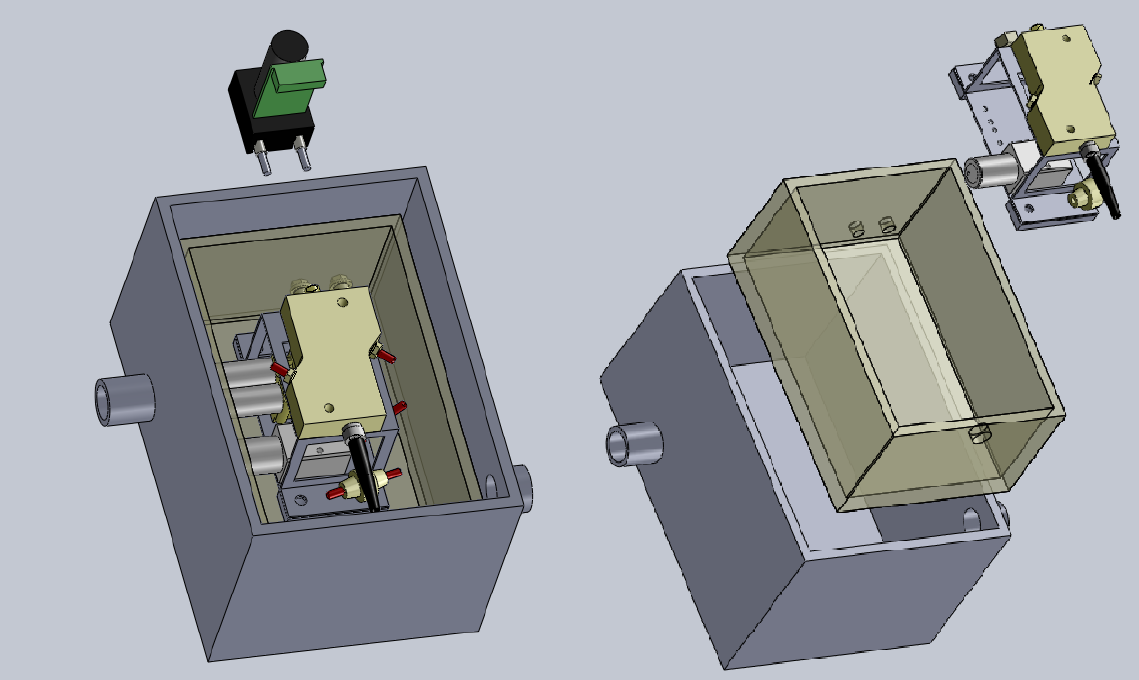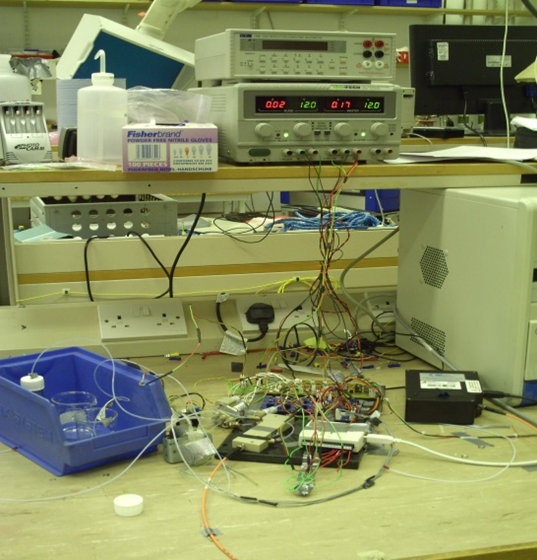
pH sensor for deep sea water
In 2008-2009, I spent 5 months in an unpaid placement at the National Oceanography Centre, Southampton, UK. During that time, I developed a bench-top prototype of a pH sensor for deep-sea water.
The sensor operates similarly to a conventional colorimetric pH sensor, where the light absorption of a reagent mixed with sampled water is measured. At the time, the literature only proposed pH sensors using tungsten lamps, which were unsuitable for autonomous systems due to their high power consumption. The prototype I developed was based on two key concepts:
- The use of LEDs to reduce the power consumption compared to white lights.
- Taylor-Aris dispersion, anticipating the miniaturization of the prototype into microchannels and system-on-chip applications.
During my work, I proposed an improvement to an unworkable system, developed a new prototype with new components, including LEDs as the light source, and wrote the entire software in MATLAB using a National Instruments USB-DAQ.
I also calculated the uncertainties of pH measurements in relation to light absorption, as explained on pages 28 and 29 of my project report. This provides additional insight into Eq. 4 in the paper published by Rerolle et al., 2012.
During my research and development, I conducted a literature review and had the opportunity to synthesize seawater in the lab, gaining knowledge about salinity variation with water depth.

I digged in my archives to find the only pictureof the prototype. It does not look good for the eye, but it was working!
You can see the black spectrometer on the right of the bench, sample and dye located in the blue box on the left, and the fluidic parts and the USB DAQ in the middle
Report Abstract
Carbon dioxide is easily dissolved in seawater, leading to a growth of alkalinity. The human activity has then a repercussion on the seawater chemical equilibrium. The unbalanced medium tends to be equilibrated again by acting on the flora and fauna. For more commodities, the pH scale is used rather than CO2 or pCO2.
Development of new sensors dedicated to the pH measurement is then necessary to follow the evolutions of seawater. In this report, a new pH sensor is presented, based on the spectrophotometric method. It is a bench-top system which corresponds to the new exigencies: autonomous, high precision and accuracy, long time deployment, small size, low cost…
With every component, software and this present report, reader can understand the principles of the spectrophotometric method, and built the prototype presented.

